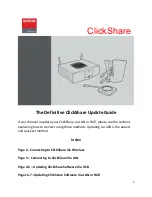
DS_ND12S10A_07172008
7
DESIGN CONSIDERATIONS
The ND 50A uses two phase and voltage mode controlled
buck topology. The output can be trimmed in the range of
0.9Vdc to 3.63Vdc with a resistor from Trim pin to Ground.
A remote sense function is provided and it is able to
compensate for a drop from the output of converter to
point of load.
The converter can be turned ON/OFF by remote control.
Positive on/off (ENABLE pin) logic implies that the
converter DC output is enabled when
the signal is driven
high (greater than 2.4V) or floating and disabled when the
signal is driven low (below 0.8V). Negative on/off logic is
optional.
The converter provides an open collector Power Good
signal. The power good signal is pulled low when output is
not within ±10% of Vout or Enable is OFF.
The converter can protect itself by entering hiccup mode
against over current and short circuit condition.
The converter has an over temperature protection which
can protect itself by shutting down for an over
temperature event. There is a thermal hysteresis of
typically 20°C
Safety Considerations
It is recommended that the user to provide a fuse with
TBD
in the input line for safety. The output voltage
set-point and the output current in the application could
define the amperage rating of the fuse.
FEATURES DESCRIPTIONS
ENABLE (On/Off)
The ENABLE (on/off) input allows external circuitry to put
the ND converter into a low power dissipation (sleep)
mode. Positive ENABLE is available as standard.
Positive ENABLE units of the ND series are turned on if
the ENABLE pin is high or floating. Pulling the pin low will
turn off the unit. With the active high function, the output is
guaranteed to turn on if the ENABLE pin is driven above
2.4V. The output will turn off if the ENABLE pin voltage is
pulled below 0.8V.
The ENABLE input can be driven in a variety of ways as
shown in Figures 23 and 24. If the ENABLE signal comes
from the primary side of the circuit, the ENABLE can be
driven through either a bipolar signal transistor (Figure
23). If the enable signal comes from the secondary side,
then an opto-coupler or other isolation devices must be
used to bring the signal across the voltage isolation
(please see Figure 24).
Figure 23:
Enable Input drive circuit for ND series
Figure 24
: Enable input drive circuit example with isolation.





























